
Without the right nutrients, your North Carolina grass will become weak and wither. But fertilizing with the right products at the right time (during its growing season) will strengthen your grass and prevent lawn diseases. With so many different grass types, it’s difficult to know when (and how) to fertilize your North Carolina lawn, but we’ve got your back.
In this article, we’ll cover everything you need to know to ensure your Tar Heel State lawn is fed correctly and at the ideal time for your grass type.
What Does Fertilizer Do?
Fertilizers provide the necessary nutrients to help your grass grow strong and healthy. Most grass thrives in nutrient-rich soil, so when that soil lacks essential elements, the grass becomes weak and susceptible to disease and pests.
Fertilizers supply lawns with three primary nutrients:
- Nitrogen (N): Helps rapid growth and protein synthesis; increases leaf development to create a dense lawn
- Phosphorus (P): Helps early root growth; promotes plant maturity and seed development
- Potassium (K): Increases drought and disease resistance
These are listed as the N-P-K ratio on a bag of fertilizer.
When to Fertilize Your North Carolina Lawn
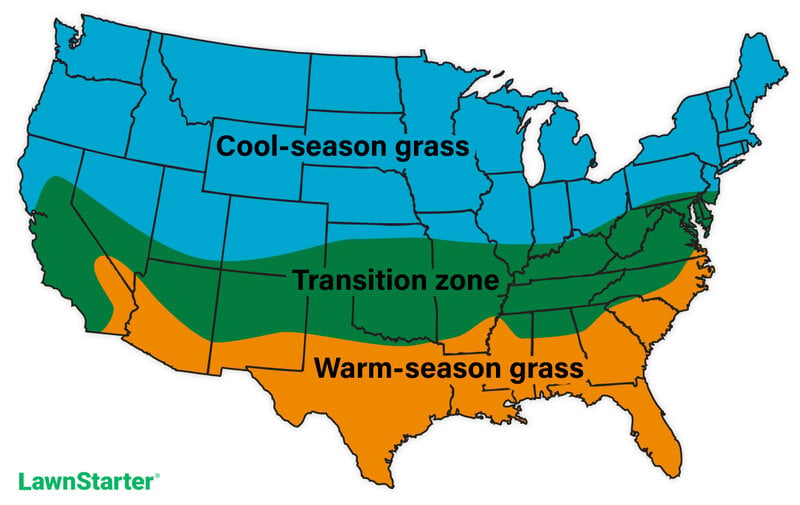
Grass types are categorized as warm-season or cool-season. North Carolina is part of a “transition zone,” which means the best grass seed for North Carolina includes both warm- and cool-season grass types, depending on where in the state you live. Here’s what you need to know about when to fertilize your North Carolina lawn, depending on your grass type.
Cool-Season Grasses
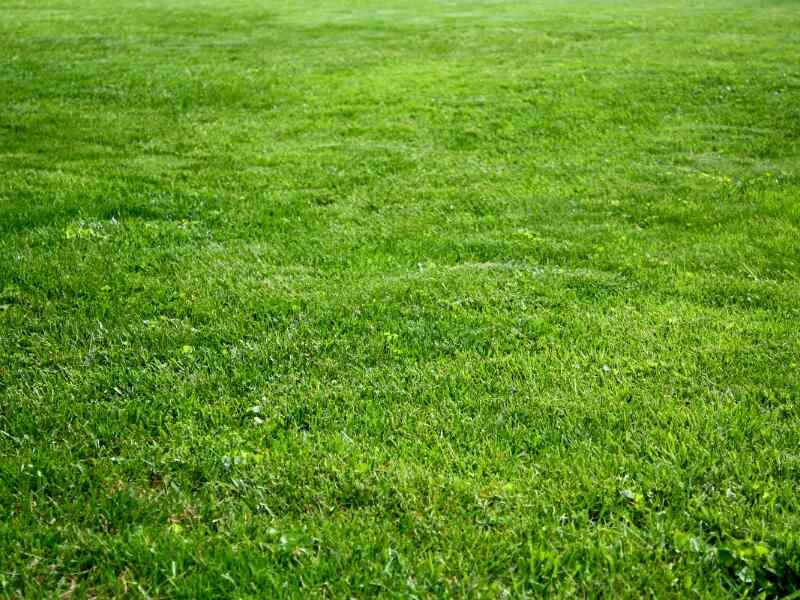
Photo Credit: JeanUrsula / Canva Pro / License
Cool-season grasses thrive in spring and fall when the weather is cooler before going dormant during the warmer months. They tend to flourish in climates with warm summers and cold winters. During their growing season, cool-season grasses become full and lush, utilizing the available moisture and nutrients.
Common cool-season grasses in North Carolina include:
- Tall fescue
- Kentucky bluegrass
- Fine fescue
- Perennial ryegrass
- Annual ryegrass
According to NC State University, here are the best times to fertilize your cool-season grasses:
- Round 1: March-May. You should only fertilize as needed to help the grass recover from the damage it received over the winter. Use between 1/5 and 1/2 pounds of nitrogen for every 1,000 square feet if you need to fertilize.
- Round 2: June-August. Over the summer, your grass will take some damage and should only be fertilized as needed. Use between 1/5 and 1/2 pounds of nitrogen for every 1,000 square feet.
- Round 3: September-November. Do a soil test to see how your grass is doing, and only fertilize if it needs it. Use one pound of nitrogen per 1,000 square feet in September and November.
- Round 4: December-February. Fertilize in February using one pound of nitrogen per 1,000 square feet.
Warm-Season Grasses
Warm-season grasses thrive in places with year-round warm temperatures and go dormant for three to five months during the winter.
Fertilizing the different types of warm-season grasses in North Carolina is a bit more complex and detailed, so your fertilizing routine should be tailored to the grass in your lawn:
Bermudagrass
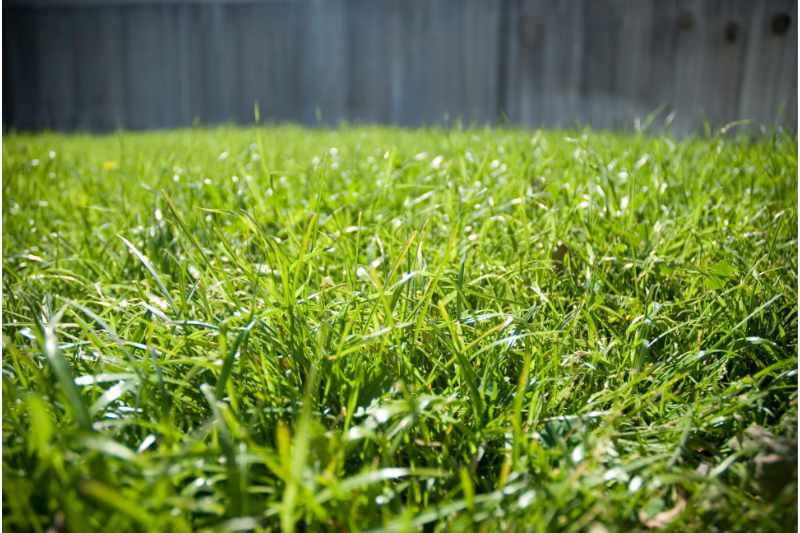
- Round 1: March-May: Test your soil; fertilize as needed when your lawn turns fully green.
- Round 2: June-August: Apply nitrogen every 4 to 6 weeks.
- Round 3: September-November: Use a low nitrogen, high potassium fertilizer or potash (K2O).
- Round 4: December-February: Don’t fertilize; test your soil if a soil test is due. Adjust soil pH as needed.
Grass Seed Options:
– Scotts Turf Builder Bermudagrass (10-lb. bag)
– Hancock Seed Co. Bermudagrass (50-lb. bag)
Centipedegrass
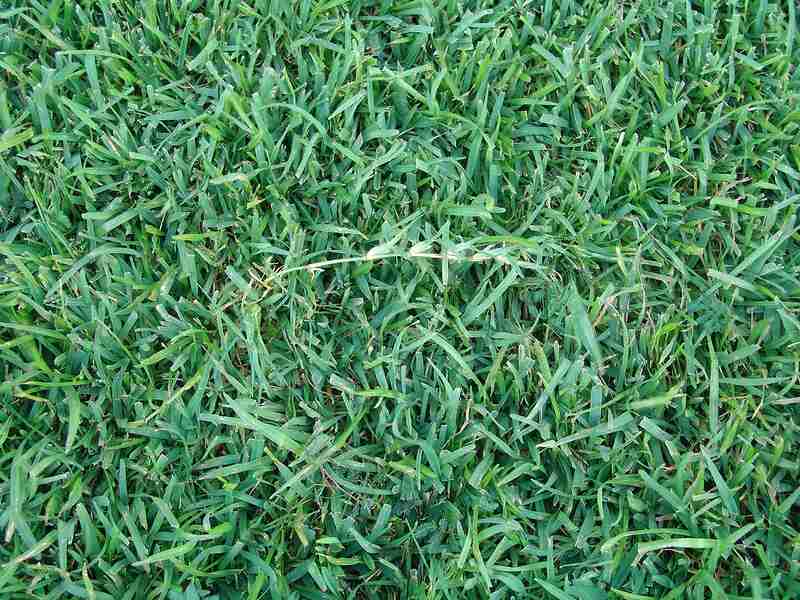
Photo Credit: James Becwar / Wikimedia Commons / CC0 1.0
- Round 1: March-May: Test your soil; fertilize as needed; don’t apply nitrogen before mid-May.
- Round 2: June-August: Apply nitrogen every 4 to 6 weeks.
- Round 3: September-November: Apply no more than 1/2 LB of nitrogen per 1000 square feet in September or four weeks before the first frost; use a low-nitrogen, high-potassium fertilizer or supplement with potash (K2O) 4 to 6 weeks before the expected frost.
- Round 4: December-February: Don’t fertilize; test your soil if a soil test is due, and adjust soil pH as needed.
Grass Seed Options:
– Gulf Kist Coated Centipedegrass Seeds (1 lb.)
– Scotts EZ Seed Patch and Repair Centipedegrass (3.75 lbs.)
– TifBlair Centipedegrass (5-lb. bag)
Zoysiagrass
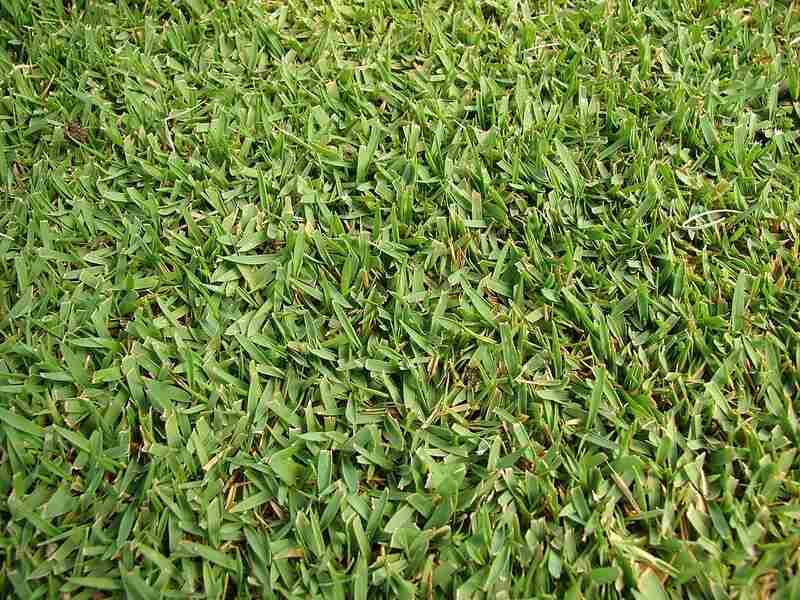
- Round 1: March-May: Test your soil; fertilize as needed; low nitrogen until March 15.
- Round 2: June-August: Apply nitrogen in late June or early July; repeat in mid-August.
- Round 3: September-November: Don’t apply nitrogen; instead, apply potassium (potash K2O).
- Round 4: December-February: Don’t fertilize; test your soil if a soil test is due and adjust soil pH as needed
Grass Plug and Seed Options:
– EZPlug Zoysia Plugs (50 Large Grass Plugs)
– Zoysia Plugs (50 Full & Lush Grass Plugs)
– Zoysia Plugs (100 Plugs)
How to Fertilize Your North Carolina Lawn
Choose Your Fertilizer
One of the first things to do before fertilizing your lawn is to choose the right fertilizer. Lawn fertilizers are categorized as either:
- Quick-release: Gives the soil an instant nutrient boost.
- Slow-release: Provides nutrients gradually over time. They are less likely to harm the environment.
These fertilizers come in liquid, granular, and organic forms. Here are the main differences between liquid vs. granular fertilizers:
- Granular fertilizer: Tiny granules that are applied with a fertilizer spreader. Most granular fertilizers are slow-release.
- Liquid fertilizer: Available in ready-to-spray bottles that can be hooked to a garden hose or in a concentrated liquid form that needs to be diluted with water. They are typically quick-release.
Organic fertilizers often come from natural materials, such as grass clippings, manure, compost, or bone meal.
Be careful to follow the best fertilizing practices to avoid overuse, prevent burning your grass, and protect your waterways.
Prepare Your Lawn
You should take a few steps to prepare your lawn before you fertilize so that the soil can adequately absorb the nutrients in the fertilizer.
Here is what you should do:
- Test your soil: This will tell you your soil’s pH and what nutrients it needs so you can choose the right fertilizer. Store-bought strips will only tell you your soil’s pH level, while some at-home soil testing kits can estimate your soil’s nutrient levels in addition to its pH value. You can send a soil sample to a lab for a detailed report.
- Adjust the soil pH: Your soil test will tell you if your soil pH is too acidic or too alkaline, which means your grass won’t absorb the nutrients from the fertilizer. The ideal pH range for grass is 5 – 6.5. If your soil pH is low, add agricultural lime. If your soil pH is high, add elemental sulfur.
- Remove weeds: You want to fertilize your grass, not weeds. Use a post-emergent herbicide to get rid of your weeds or a pre-emergent herbicide to prevent them. Once you apply your herbicide, you will need to wait a week before fertilizing.
- Mow: If your grass is tall, it will be more difficult for the fertilizer to spread and block it from reaching the soil. You should be able to mow and fertilize on the same day.
- Water the grass: Water your lawn three to four days before fertilizing so the soil will be moist enough to absorb nutrients but not too wet.
Feeding Time
Depending on which fertilizer you choose, here are the steps for properly applying an even layer of fertilizer to your North Carolina lawn:
Granular
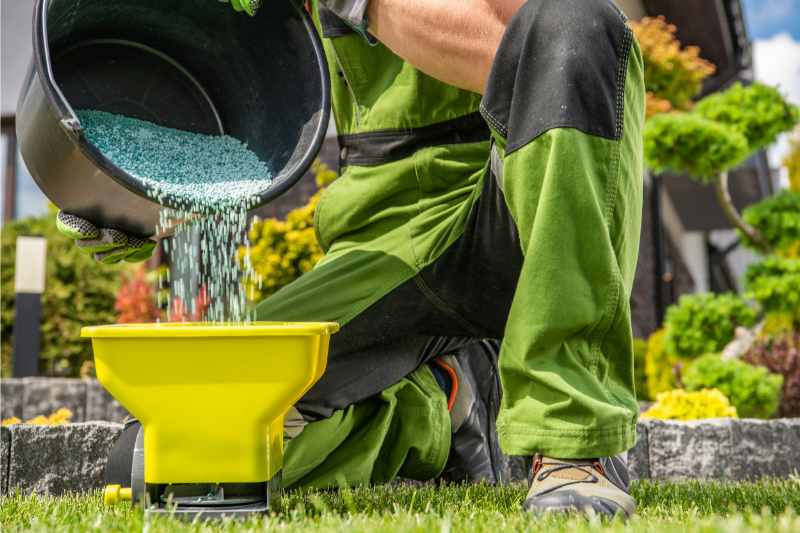
- Pick a fertilizer spreader.
- Wear protective gear, including gloves, close-toed shoes, long pants, long-sleeved shirts, a dust mask, and safety goggles.
- Set your spreader to apply the right amount based on the instructions on your fertilizer bag.
- Place your spreader on your driveway over a tarp before filling it to catch any spilled granules and avoid stained pavement or burned grass.
- Fill the spreader with as much fertilizer as you need. Put any spilled granules back into the bag.
- Apply fertilizer by walking around the perimeter of your lawn at a slow, steady pace. Then apply to the middle by walking back and forth in even, slightly overlapping lines, similar to how you mow.
- Water your lawn.
Liquid
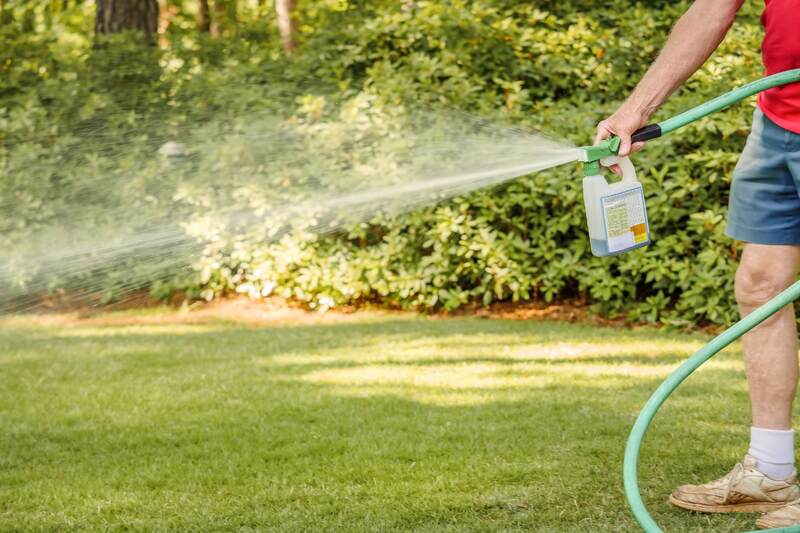
- Put on protective clothing as mentioned above.
- Depending on your tool, you can attach your sprayer to the hose or fill your ready-to-spray bottle.
- Spray your liquid fertilizer evenly. Pick one side of the lawn to start on and stand at a distance, spraying from side to side. Then, walk backward over your lawn.
- Wait two to four hours for the fertilizer to dry.
- Water your lawn.
Organic
- Some organic fertilizers can be put into a spreader and applied the same as a granular fertilizer.
- Others can be steeped in water and sprayed like a liquid fertilizer.
- Thicker organic fertilizers like grass clippings or compost should be manually applied to your lawn by hand. This is known as topdressing a lawn.
- Pour the compost into small piles on your lawn.
- Spread evenly around the yard with a rake so that the layer is only half an inch thick.
- Water your lawn.
Other Factors to Consider
Here are additional factors to consider before fertilizing your lawn:
- Soil type: Very sandy and clay-heavy soils need more fertilizer than silt or loam soils.
- Location: North Carolina’s growing season is longer along the coast than in the mountains. Therefore, your location in the state may also affect how much fertilizer you need.
- Age and health of the lawn: If your lawn is newly established or hasn’t been cared for in a while, it’s more likely to need fertilizer.
- Weather: Extra summer rain may necessitate more fertilizer. If the weather is too hot, then a summer lawn care tip for North Carolina is to apply less fertilizer since it is more likely to burn and damage the grass.
- Grass type: Grasses have different fertilizing needs, too. While some need more fertilizer for the best performance (Bermuda), others do well with much less (centipede).
FAQ
When is a Bad Time to Fertilize My Lawn?
Fertilizing at the wrong time can lead to wasted nutrients and even potential harm to your lawn. Here are the times you should avoid fertilizing:
- During the wrong season: Depending on your grass type, the best time to fertilize in North Carolina is between February and November.
- During a drought: Fertilizing puts too much pressure on your grass in dry weather.
- After rainfall: Fertilizing wet grass may lead to runoff and poor absorption.
- If you don’t need to: Unnecessary fertilizing is a bad idea; test your soil and know your grass type.
Is it Better to Fertilize in the Morning or Evening?
Early mornings and late evenings are suitable times to apply fertilizer. However, to prevent fertilizer burn, you should always avoid fertilizing during the hottest part of the day.
Pro Tip: You should wait about one to two days after applying the fertilizer before you allow any foot traffic on your grass.
Do Native Plants Need Fertilizing?
No, native plants in North Carolina don’t typically need to be fertilized. Many naturally thrive in poor or local soil conditions.
Hire a Pro
If you’re ready to feed your soil this season, you’re a step closer to achieving a lush and healthy lawn in The Old North State. However, it’s also necessary to keep up with a variety of routine maintenance jobs, such as mowing, watering, and weed control.
If all of that sounds overwhelming, have no fear. Lawnstarter will connect you with lawn care professionals in your area to keep your lawn lush and beautiful throughout the year.
Pest Gnome participates in the Amazon Services LLC Associates Program. Pest Gnome may earn revenue from products promoted in this article.
Main Image Credit: Warren LeMay / Flickr / Public Domain